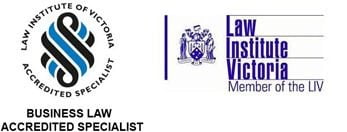Enforcing a judgment – recovery options to getting paid
Obtaining a judgment in your favour is just the first step in the process of recovering what you are owed. Once a judgment debt is ordered, there are various types of enforcement available to you as creditor, to ensure that the debtor pays their debt. These enforcement mechanisms are designed to compel the debtor to fulfill their legal obligations.
SUMMARY OF ENFORCEMENT STEPS:
(1) Summons for Oral Examination (SOE)
The first step in the process of recovering a debt is to find out if the debtor has the financial capacity to pay you what is owed. This enquiry through the courts for an order to compel the debtor to attend an examination hearing, where they are required to disclose their financial circumstances. This includes the disclosure of their income, assets, and liabilities. The court will then provide us with the information obtained during the oral examination. With these answers, we will be able to determine the most effective enforcement action. If the debtor does not attend the examination hearing, a civil warrant can be issued for their arrest.
(2) Attachment of Debt Order (Garnishee)
Garnishee orders allow you to intercept funds owed to the debtor by a third party. This could involve redirecting wages, bank accounts, or other sources of income directly to you as creditor, until the judgment debt is satisfied. Employers, financial institutions, or other third parties served with a garnishee order must comply with its terms.
(3) Instalment Orders
Instalment Orders allow a debt to be repaid in weekly, fortnightly or monthly intervals, until the debt is paid off. The debtor will need to complete a statement of affairs which includes questions about the amount and source of weekly income, expenses, property, assets and any other debts or liabilities. If the court grants an instalment order allowing the debtor to repay the debt in regular, manageable payments, you will not be able to take any further enforcement steps against the debtor.
(4) Warrant to Seize Property
If the debtor owns valuable assets, you can apply for a warrant to allow the sheriff to seize and sell the debtor’s assets to cover the outstanding debt. This can include tangible assets like vehicles, jewellery, or other valuable items. However, the sheriff cannot seize items that the debtor needs to live in basic comfort, such as a refrigerator, television or washing machine. If the sheriff is successful in seizing tangible assets, the seized items will be sold at a public auction and the proceeds will be forwarded to you up to the value of the outstanding debt.
(5) Bankruptcy Proceedings
If the judgment debt is for an amount of at least $10,000.00 and against an individual, you may issue a bankruptcy notice which is a formal demand against the debtor for payment based on a final judgment order. The notice gives the debtor 21 days to either pay or come to an arrangement to pay the debt. If the debtor does not comply with the notice, they will be deemed to have committed an act of bankruptcy and you may then issue a creditor’s petition to make the debtor bankrupt. An appointed trustee will then oversee the distribution of the debtor’s assets amongst creditors.
(6) Winding Up Proceedings
If the judgment debt is for an amount of at least $4,000.00 and against a company, you may issue a creditor’s statutory demand which is a formal demand against the debtor for payment based on a final judgment order or in circumstances where the debt is undisputed. The notice gives the debtor 21 days to either pay or come to an arrangement to pay the debt or set aside the statutory demand. If the debtor does not comply with the statutory demand, they will be deemed to have committed an act of insolvency and you may then issue a winding up proceedings to ultimately wind up the company and have a liquidator appointed to manage the company’s affairs. An appointed liquidator will then realise any assets of the company in liquidation and oversee the distribution of the debtor’s assets amongst creditors.
Conclusion
The above is only a short summary of possible enforcement steps that are available. It is therefore essential for you to obtain considered advice on which enforcement step is going to achieve your goals and will be specific for your set of circumstances. Consulting with our litigation lawyers who are experienced in debt recovery and enforcement can provide valuable guidance in navigating the complexities of the enforcement process. Ultimately, the goal is to secure the satisfaction of the judgment debt through effective and legally sanctioned means.
Kennedy Guy
For over fifty years, Kennedy Guy have provided advice and represented a variety of clients including individuals, families, and small medium and large enterprises. If you wish to engage the firm, feel free to contact us via our website, by emailing [email protected], or via phone at (03) 9311 8511.

